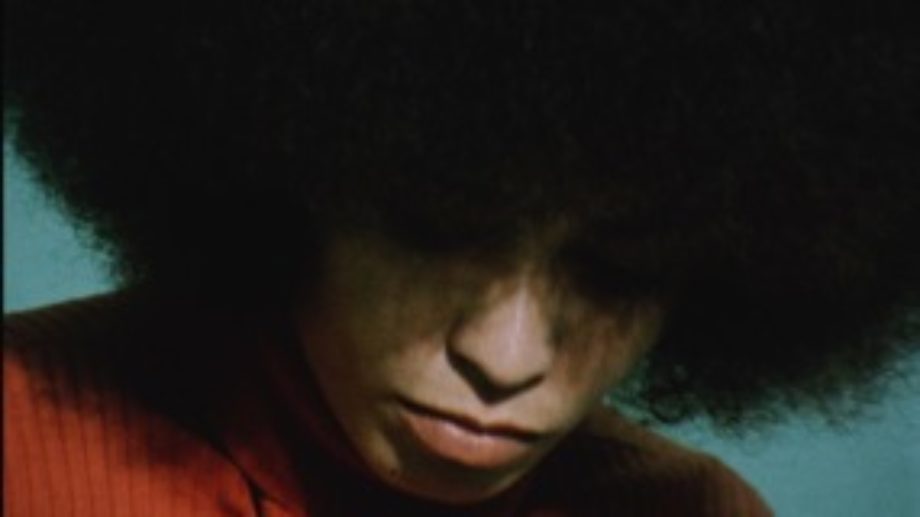Goran Hugo Olsson’s THE BLACK POWER MIX TAPE 1967-1975 proudly eschews editing for dramatic effect, quick cuts to keep the youngsters interested and boldly (in terms of current documentary filmmaking trends) allows the archived footage of the leading figures in the Black Power movement literally speak for themselves. Mind you, Olsson’s film has the luxury of doing that since the footage in question was shot for Swedish Television and therefore from an outsider’s viewpoint with no obvious agenda or political baggage attached.
Of course, having all of that on your side as a filmmaker and actually utilizing it and effectively using it to tell a story or give a fresh glimpse at history is quite another thing. And film fest audiences from Sundance to Berlin and now New Directors/New Films have enthusiastically given the film their stamp of approval. Since Olsson saw the project as much more than an academic exercise, that reception has more than validated his investment in it since he discovered the “lost” footage in the Swedish Television cellar.
1) You have said that you thought of it as your duty to take this long-lost footage and make it accessible to an audience. Why did you feel so strongly about it?
All creative people has a strong urge to show their work (good or bad). But in this case it´s more than that. This film contains moments that should be easily accessible to interested people in all times. I envy books, they seem to be there to all – forever.
2) Can you describe how you arrived at the decision to create the documentary’s “mix tape” format and what went into that process?
First it was important not to edit it to “spice up” the material in an artificial way. I think that if we had done that, the film would have less impact on a contemporary audience. The era of fast, in your face, editing, as a cheep way out, is history. This material is sparkling both in content and image. Also the mix tape has certain connotations to it: you usually put a lot of effort into making a mix tape, trying to present something unique and utterly good, and most often it is for somebody you love and care about.
 by Story.jpg)
Angela Davis
3) What difference do you believe telling this “story” from the Swedish filmmakers’ (and your) perspective makes in giving the subject of the Black Power Movement mainstream accessibility?
The Swedish perspective provides you with a possible naive approach that could be an embarrassment coming from an American. I benefited, like my colleagues did in the 60´s and 70´s, coming from such a remote place like Sweden. Knocking on someone’s door they can’t say no to you. Everyone involved in the project from the American side has been so generous and forthcoming.
4) Of the people who supplied contemporary commentary for the film, who surprised you the most with what they had to say about that period of time and that cause/struggle?
I did know that Talib Kweli worked in a black bookstore, but I did not know he was so influenced by Stokely Carmichael.
5) In addition to making films, you also manufacture the A-cam, an innovation of the Super-16 film camera. Did your idea for that innovation arise from your own filmmaking needs and can you describe it to someone who is not another cameraperson or techie?
Our home is Story AB, a film production company. Our base is the documentary process. Which means you have a relation with the subject before, under and after you create your film, book or whatever. We have done feature length docs, but also radio, text, fine art, festivals, commercials and animation, everything diverted from the documentary process. At one point we needed a camera, and at that time super 16 was the medium of choice. Now the “camera-factory” is in its own company, Ikonoskop. We have just launched the digital version, the A-cam DII: The smallest high-end cinema camera.
6) What documentary filmmakers and which films have had the most influence over your approach to making films?
All obvious, all American: I saw CHELSEA GIRLS by Andy Warhol as an 18 year old student at Moderna Museet in Stockholm. My life was not the same after that. D.A. Pennebaker also, and I haven't composed a single image without the imagery of IN THE STREET by Helen Levitt in the back of my head.
 by Story.jpg)
Stokely Carmichael
7) Following your success with the film since you discovered the film footage in the Swedish Television cellar, are you constantly looking for opportunities to look though people’s cellars and attics hoping to strike gold again?
In my filmmaking, I go back and forth between four corners; politics, music, the present and the past. I will work with archive again, but now I´m looking at something more contemporary.
8) You have mentioned your regrets of not being able to incorporate footage from the Shirley Chisholm Presidential campaign in 1972 because it didn’t fit within the context of the film’s storyline. Could we possibly see that as your next film on the horizon?
No, there is a great film on the hero Chisholm, CHISHOLM ’72: UNBOUGHT & UNBOSSED by Shola Lynch. Though, it will for sure be on the extra material on the DVD.
9) What is the best thing about having THE BLACK POWER MIX TAPE 1967-1975 screened at New Directors/New Films?
First it´s an honor itself. I´m so excited! Secondly, I hope that the film will reach out to people that have influence and can make it travel to schools, libraries and universities all over the US.
10) Popcorn or candy?
Swedish snuff – Snus, always.



